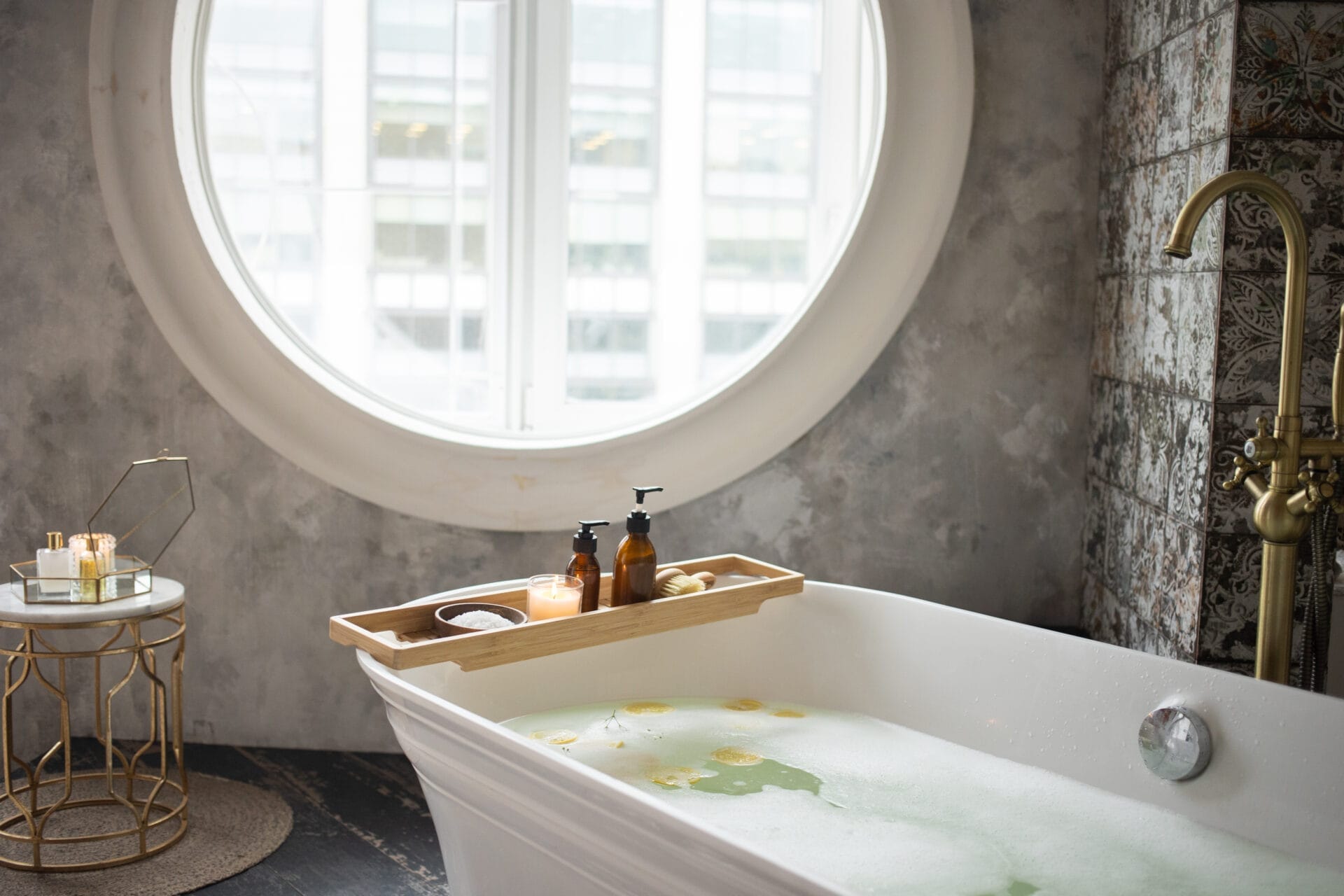Having hot water on demand is a convenience most of us take for granted. However, when it comes to setting the temperature of your water heater, it’s important to strike a balance between energy efficiency and comfort. The ideal water heater temperature setting will depend on several factors, including your climate and the size of your household. In this article, we will explore what temperature your water heater should be set at for optimal performance.The ideal water heater temperature is 120 degrees Fahrenheit (49 degrees Celsius). This temperature is high enough to kill any bacteria that may be present in the water, while still being low enough to prevent scalding.
Factors That Determine the Ideal Water Heater Temperature
The ideal temperature for a water heater can vary depending on various factors. These include the type of water heater you have, the size of your household, and your personal preferences. Here are some of the most common factors that determine the ideal water heater temperature:
Type of Water Heater
The type of water heater you have will play a role in determining what temperature is best for it. Tankless water heaters generally require higher temperatures than traditional tank-style heaters. For example, tankless water heaters may require temperatures up to 140°F while tank-style heaters may only need 120°F.
Size of Household
The size of your household also affects what temperature is ideal for your water heater. If you live alone or with only one other person, then a lower temperature may be sufficient. On the other hand, if you live with a large family then a higher temperature may be necessary to provide enough hot water for everyone.
Personal Preferences
Finally, your personal preferences should also be taken into consideration when setting the temperature on your water heater. Some people prefer their showers at higher temperatures while others like them cooler. Depending on what you prefer, you can adjust the thermostat on your water heater accordingly.
By taking all these factors into account when setting the temperature on your water heater, you can ensure that it provides enough hot water while still operating efficiently and safely.
Benefits of Setting the Water Heater Temperature at the Right Level
Setting your water heater temperature to the right level is important to ensure that you are getting the most out of your hot water. Not only will it help you save money on energy costs, but it can also improve the efficiency of your hot water system and help reduce the risk of scalding. Here are some of the benefits of setting your water heater temperature at the right level:
1. Lower Energy Costs – By setting your water heater temperature to a lower level, such as 120°F, you can save up to 10% on energy costs. This is because it takes less energy to heat a lower temperature of water than a higher one.
2. Increased Efficiency – When your hot water system is running at its optimal level, it can be more efficient and use less energy overall. This means that you won’t have to wait as long for hot water and that you’ll get more out of each tank full.
3. Reduced Risk of Scalding – Setting your water heater temperature too high can increase the risk of scalding from hot water, especially for children and elderly people. By keeping it at a lower temperature, such as 120°F, you can reduce this risk significantly.
Overall, setting your water heater temperature at the right level can provide many benefits including lower energy costs, increased efficiency and reduced risk of scalding. It’s important to make sure that you set it correctly so that you can get the most out of your hot water system without compromising safety or comfort.
Setting Your Water Heater Temperature
Setting your water heater temperature is an important part of maintaining a safe and comfortable home. By adjusting the temperature of your water heater, you can ensure that it is not too hot or too cold for use. Here are a few tips on how to set your water heater temperature correctly.
The first step in setting your water heater temperature is to determine what type of water heater you have. Traditional tank-style water heaters typically require manual adjustment of the thermostat, while newer tankless models may be able to be adjusted through a digital control panel or remote control.
Once you have determined the type of water heater you have, you will need to identify the correct temperature setting for your needs. A general rule of thumb is that the temperature should be set between 120 and 140 degrees Fahrenheit for maximum efficiency and safety. If you are using a tankless model, it’s best to keep the temperature between 105 and 125 degrees Fahrenheit.
It’s also important to keep an eye on how much hot water you are using at any given time. If you find that your hot water usage is increasing, then it may be time to increase the temperature setting on your water heater as well. This will help ensure that there is enough hot water available when needed without having to waste excess energy heating more than necessary.
Finally, remember to check the thermostat periodically to make sure it’s set correctly and that it’s working properly. Also, be sure to check for any signs of damage or wear-and-tear on the thermostat itself or any associated wiring or piping before making any adjustments.
By following these simple tips on how to set your water heater temperature correctly, you can ensure that your home remains comfortable and safe while also saving energy and money over time.
What Happens If You Set Your Water Heater Temperature Too Low
Setting your water heater temperature too low can have a number of consequences, including decreased performance and increased energy costs. When your water heater is set too low, it takes longer for the water to heat up and you may not have enough hot water when you need it. Additionally, the lower temperatures can encourage bacteria growth in the tank, resulting in health risks.
A water heater that is set too low can also result in an increase in energy costs as the system has to work harder to heat the water to a comfortable temperature. This increase in energy use also decreases the lifespan of your appliance as it works overtime to provide hot water.
Finally, setting your water heater temperature too low can lead to scalding risks, especially in households with children or elderly family members. Scalding occurs when skin comes into contact with extremely hot temperatures, resulting in painful burns and potential health risks. To avoid scalding risks and other issues associated with a too-low setting on your water heater, it’s best to consult with a professional who can help you determine an appropriate temperature for your home and family’s needs.

What Happens If You Set Your Water Heater Temperature Too High?
Setting your water heater temperature too high can be dangerous, as it increases the risk of burns and scalding. It can also lead to an increase in energy costs, as higher temperatures require more energy to maintain. Additionally, a water heater that is set too high can cause mineral deposits to form on the heating element and tank walls, which can reduce the efficiency of your system and lead to premature failure. If this happens, it may require expensive repairs or replacement of the entire unit.
To avoid these issues, it’s important to set your water heater temperature no higher than 140°F (60°C). This temperature is hot enough to provide comfortable hot water for most household needs without posing a risk of burns or scalding. If you’re concerned about bacteria growth in your hot water tank, you can increase the temperature slightly up to 150°F (66°C). However, any higher than this could result in damage to your appliance and an increase in energy costs.
Adjusting Your Home’s Water Heater Settings
Adjusting your home’s water heater settings is an important part of ensuring that you have a safe and comfortable home environment. It is important to follow the manufacturer’s instructions when adjusting the temperature and pressure settings on your water heater. Here are some safety tips to help you adjust your home’s water heater settings:
1. Make sure that you do not exceed the maximum temperature setting recommended by the manufacturer, as this can result in scalding or serious injury.
2. Always check the pressure relief valve before making any adjustments to ensure that it is functioning properly and that there are no blockages in the system.
3. If possible, install a thermostat-controlled valve that will automatically adjust the temperature of the water according to your needs. This will help reduce energy costs and keep your family safe from potential scalding incidents.
4. Check for any leaks or damage to the water heater on a regular basis, as this could lead to serious problems such as flooding or property damage if not addressed promptly.
5. If you have an electric water heater, make sure that all electrical connections are secure and in good working order before adjusting any settings on the unit itself.
Following these safety tips when adjusting your home’s water heater settings will help ensure a safe and comfortable living environment for you and your family. Always be sure to read and follow all safety instructions provided by the manufacturer before making any adjustments to your water heater settings.
The Role of Insulation in Regulating Home Temperatures
Insulation plays a vital role in maintaining comfortable temperatures inside the home. It is designed to keep warm air inside during the winter and cool air inside during the summer. Without insulation, temperatures would fluctuate significantly, making it difficult to maintain a consistent temperature throughout the house.
Insulation is typically made from materials like fiberglass, cellulose, and foam that are designed to prevent heat transfer. In order for insulation to be effective, it must be installed properly. This means that there must be an adequate amount of insulation in all areas of the home and that it should be properly sealed against air leaks.
In addition to preventing heat transfer, insulation also helps reduce noise from outside sources such as traffic and neighbors. This is especially important for those living in urban areas where excessive noise can be distracting and disruptive. By installing insulation, homeowners can enjoy a quieter living environment without sacrificing on comfort.
Finally, proper insulation can help reduce energy costs by making it easier to maintain comfortable indoor temperatures without overworking heating and cooling systems. By reducing energy consumption, homeowners can save money on their monthly utility bills while also helping to protect the environment by using fewer natural resources.
Overall, insulation is an essential component for regulating temperatures within the home and providing a comfortable living environment all year round. Properly installed insulation will help homeowners save money on energy costs while also reducing noise from outside sources and helping to protect the environment.

Conclusion
The temperature of your water heater should be set at 120°F for maximum safety. This temperature is hot enough to effectively kill bacteria and other pathogens, while still being safe to use. Set the thermostat to any higher setting and you can risk scalding yourself or a family member. You may also end up wasting energy and money.
When it comes to water heater temperature, it’s best to err on the side of caution. Follow the instructions on your hot water heater manual and set it no higher than 120°F for maximum safety.
It’s also important to keep an eye on your hot water heater’s pressure relief valve. If it’s leaking, call a professional immediately—it needs to be adjusted or replaced right away. Keeping your water heater in good condition helps ensure that you’ll have hot water whenever you need it.

